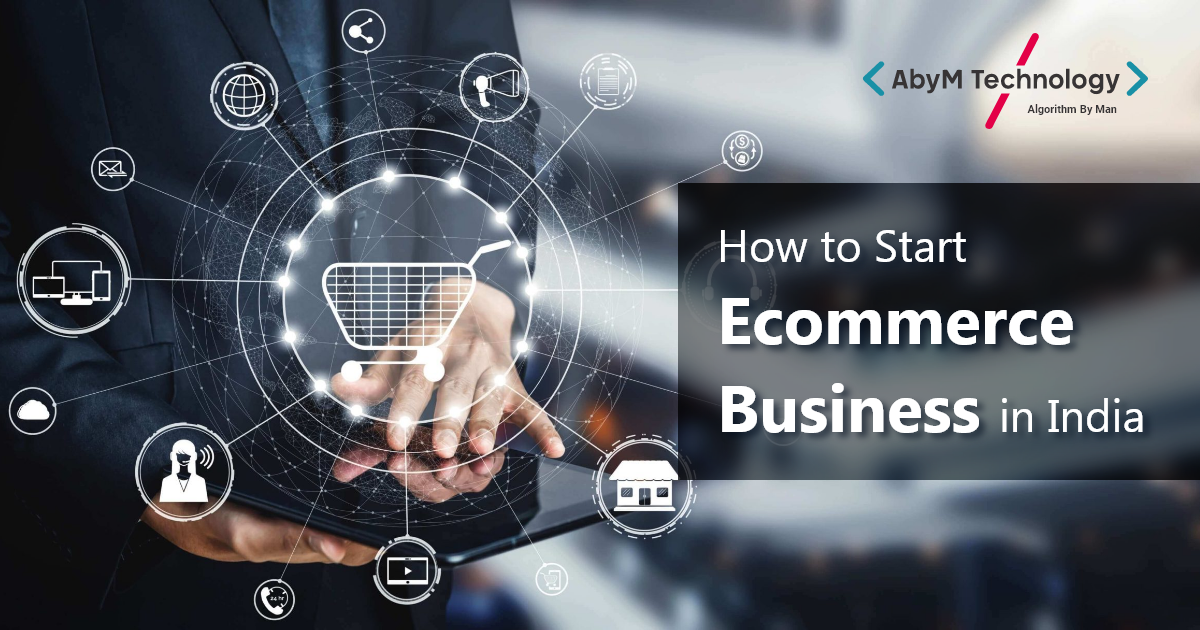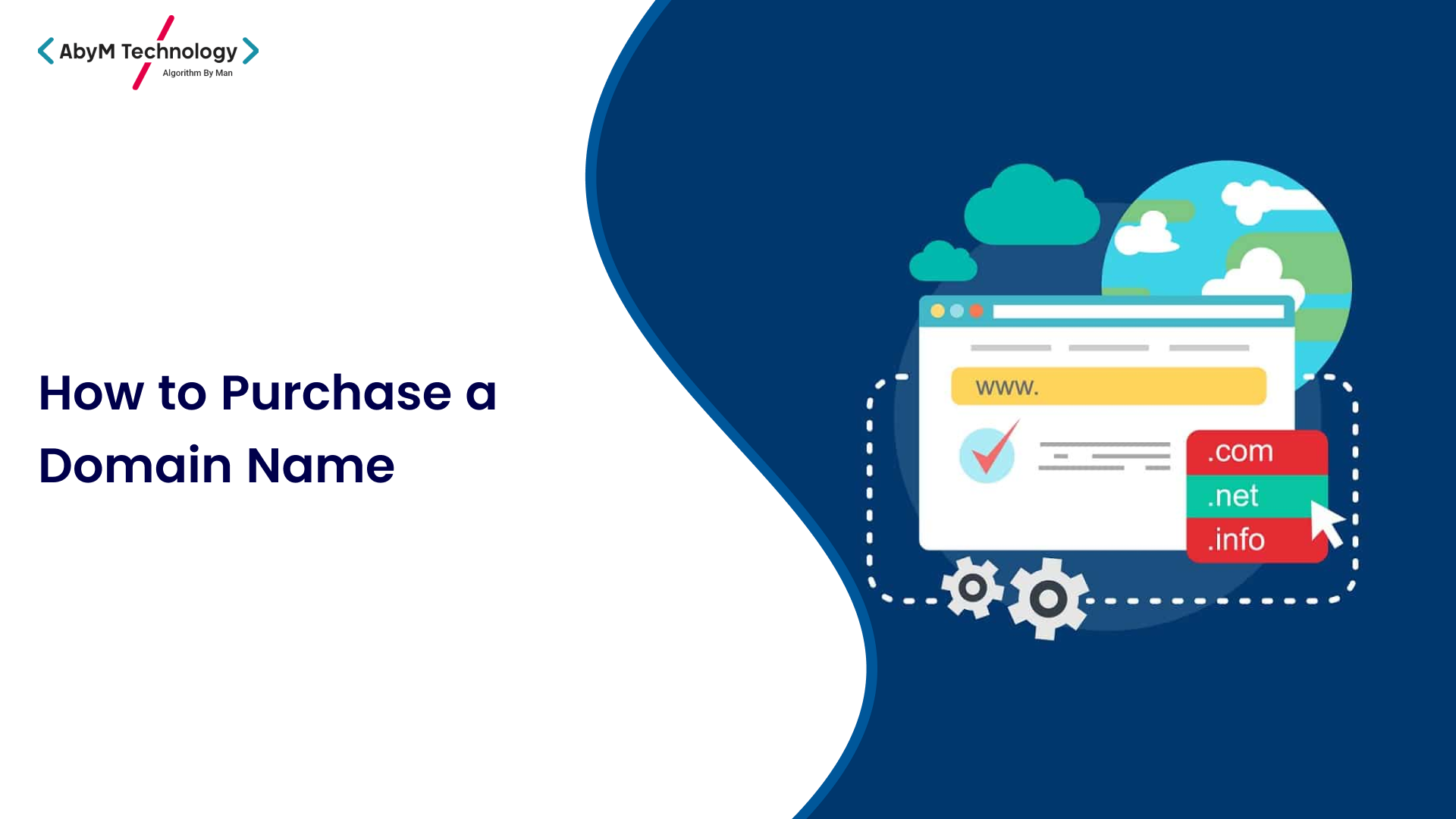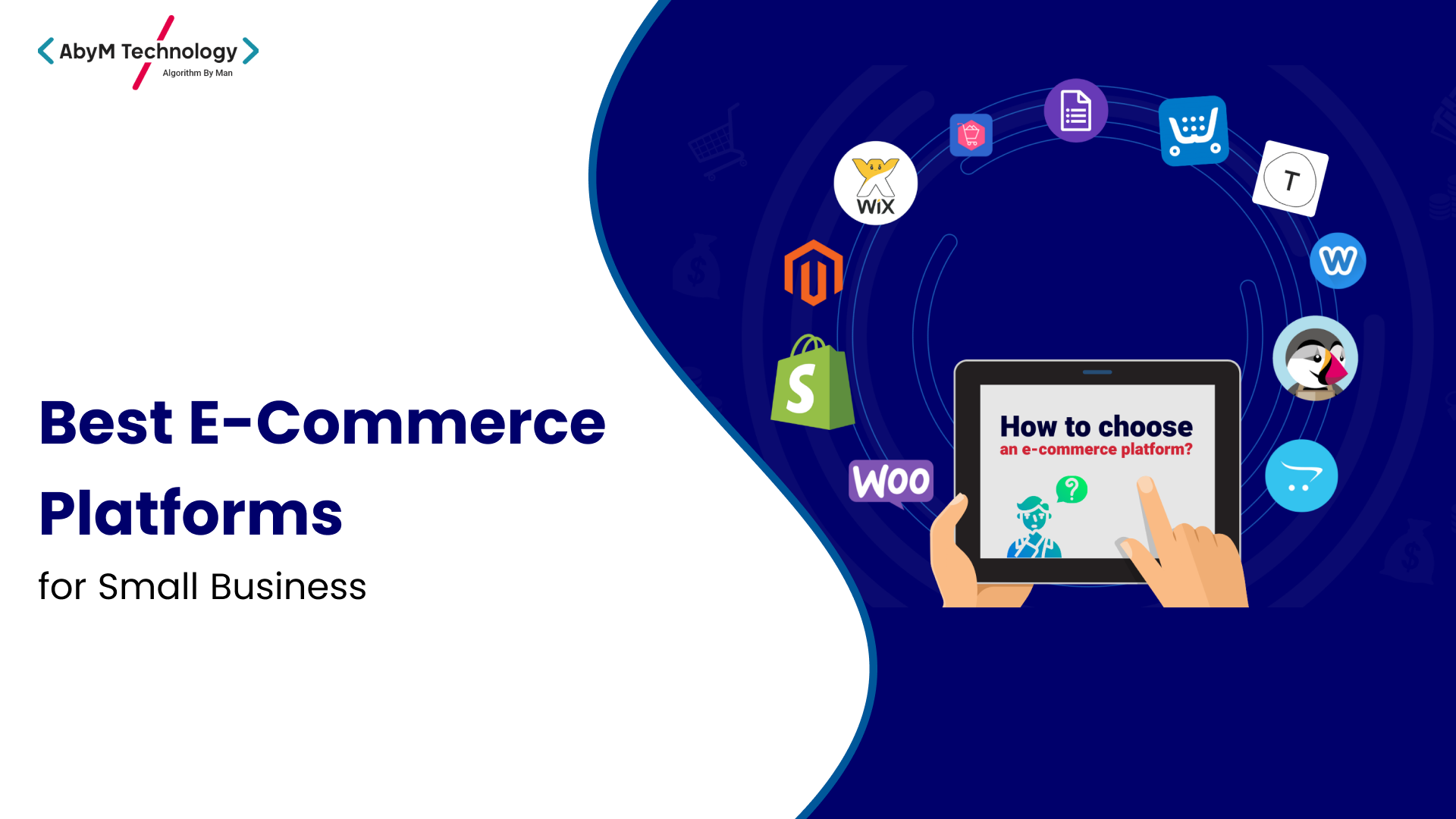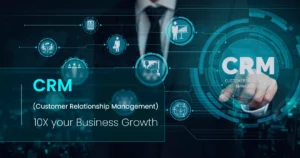How To Start Ecommerce Business In India

India’s e-commerce market is rapidly expanding, fueled by increased internet access, smartphone use, and a growing middle class. Expected to surpass $200 billion by 2026, major players like Amazon and Flipkart dominate the market but offers significant opportunities for new entrants, especially in niche areas.
Benefits of Starting an E-commerce Business in India
- Large Market: Access to over 1.4 billion potential customers.
- Favorable Demographics: Young, tech-savvy population with rising incomes.
- Cost Efficiency: Lower startup costs compared to physical stores.
- Flexibility and Scalability: 24/7 operations with easier scalability.
- Data Insights: Enhanced customer targeting through data analytics.
Key Trends and Statistics in the Indian E-commerce Industry
- Mobile Commerce: Projected to account for over 70% of sales by 2025.
- Tier II and III City Growth: Increasing e-commerce adoption in smaller cities.
- Digital Payments: UPI and mobile wallets facilitate secure transactions.
- Social Commerce: Growing sales via social media platforms.
- New Niches: Expansion in sectors like online groceries and fashion.
- Technological Innovations: Use of AI and AR to improve the shopping experience.
- Sustainability: Rising consumer demand for eco-friendly products.
In summary, India’s e-commerce market is a burgeoning opportunity for entrepreneurs, driven by a large and youthful population, technological advancements, and evolving consumer preferences.
Market Research
Understanding Market Demand and Consumer Behavior
Conduct thorough market research to understand what products or services are in demand. Analyze consumer behavior by looking at purchasing patterns, preferences, and feedback. Use surveys, focus groups, and online tools to gather data on what potential customers are looking for in an e-commerce platform.
Identifying Your Target Audience
Define your target audience based on demographics such as age, gender, income level, location, and lifestyle. Create buyer personas to understand their needs, preferences better, and buying behavior. This helps tailor your marketing strategies and product offerings to meet their specific needs.
Competitor Analysis
Study your competitors to understand their strengths and weaknesses. Analyze their business models, product offerings, pricing strategies, and customer service. Identify what makes them successful and where they might be lacking. Use this information to find gaps in the market that your business can fill and to develop strategies that set you apart from the competition.
SWOT Analysis (Strengths, Weaknesses, Opportunities, Threats)
Conduct a SWOT analysis to evaluate your business’s internal and external factors:
- Strengths: Identify your business’s strong points, such as unique products, superior technology, or excellent customer service.
- Weaknesses: Recognize areas where your business might need improvement, such as limited resources, lack of experience, or operational inefficiencies.
- Opportunities: Look for external opportunities that you can capitalize on, such as market trends, technological advancements, or gaps in the competition.
- Threats: Be aware of external threats that could impact your business, like economic downturns, changing regulations, or new competitors entering the market.
In summary, conducting thorough market research helps you understand consumer demand, identify your target audience, analyze your competitors, and evaluate your business’s position through a SWOT analysis. This foundation is crucial for making informed decisions and crafting effective strategies for your e-commerce business in India.
Business Model
Types of E-commerce Business Models
Understanding different e-commerce business models is essential for choosing the one that best fits your business goals and resources.
- Business to Consumer (B2C)
- Description: This model involves selling products directly to individual customers. It’s the most common type of e-commerce model.
- Example: Online retail stores like Amazon and Flipkart.
- Business to Business (B2B)
- Description: In this model, businesses sell products or services to other businesses. It often involves bulk transactions.
- Example: Alibaba, which connects manufacturers with retailers.
- Consumer to Consumer (C2C)
- Description: This model allows consumers to sell directly to other consumers. Platforms facilitate the transaction but don’t own the inventory.
- Example: eBay, OLX.
- Direct to Consumer (D2C)
- Description: Manufacturers sell directly to consumers, bypassing traditional retail channels. This model helps reduce costs and allows direct engagement with customers.
- Example: Brands like Xiaomi and Lenskart.
- Dropshipping
- Description: A retail fulfillment method where the store doesn’t keep the products it sells in stock. Instead, when a store sells a product, it purchases the item from a third party and has it shipped directly to the customer.
- Example: Shopify dropshipping stores.
- Marketplace Model
- Description: A platform where multiple sellers offer products to customers. The marketplace operator handles the transactions, but inventory management is the responsibility of individual sellers.
- Example: Amazon, Flipkart.
Choosing the Right Business Model for Your Needs
Selecting the appropriate business model depends on various factors:
- Capital and Resources: Evaluate your available capital and resources. For instance, dropshipping requires less initial investment compared to a full-fledged B2C model.
- Product Type: Consider the nature of your products. B2B might be suitable for industrial goods, while B2C works well for consumer products.
- Market Demand: Assess market demand and competition in your chosen segment.
- Scalability: Choose a model that allows for scalability based on your business growth plans.
- Operational Complexity: Some models, like dropshipping, are less complex operationally than managing a full inventory in a B2C setup.
Defining Your Unique Selling Proposition (USP)
Your USP is what makes your business stand out from the competition. It’s the unique benefit that your products or services offer to customers. Defining a clear and compelling USP is crucial for attracting and retaining customers.
- Identify What Makes You Unique: Determine what sets your business apart. This could be product quality, price, customer service, innovation, or brand values.
- Understand Customer Needs: Align your USP with the needs and preferences of your target audience.
- Communicate Clearly: Ensure that your USP is clearly communicated through your marketing materials, website, and customer interactions.
- Consistent Delivery: Consistently deliver on the promise of your USP to build trust and loyalty with your customers.
In summary, choosing the right e-commerce business model and defining a strong USP are critical steps in establishing a successful e-commerce business in India. These decisions should be based on thorough market research, a clear understanding of your target audience, and an honest assessment of your resources and capabilities.
Legal Requirements
Business Registration and Incorporation
- Choose a Business Structure: Decide on the legal structure of your business, such as sole proprietorship, partnership, limited liability partnership (LLP), or private limited company. Each structure has different legal and tax implications.
- Register Your Business Name: Ensure that your business name is unique and register it with the appropriate authorities. For a private limited company, register with the Ministry of Corporate Affairs (MCA).
- Obtain a Digital Signature Certificate (DSC) and Director Identification Number (DIN): These are required for company incorporation.
- Incorporate Your Company: File the necessary documents with the MCA, including the Memorandum of Association (MoA) and Articles of Association (AoA). Once approved, you will receive a Certificate of Incorporation.
Understanding GST and Tax Compliance
- GST Registration: Goods and Services Tax (GST) is mandatory for businesses with an annual turnover above the specified threshold (currently ₹20 lakhs for services and ₹40 lakhs for goods). Register for GST through the GST portal.
- GST Compliance: Maintain proper records of all transactions, file GST returns regularly, and ensure timely payment of GST.
- Income Tax: Register for a Permanent Account Number (PAN) and Tax Deduction and Collection Account Number (TAN). File annual income tax returns and comply with tax regulations.
Acquiring Necessary Licenses and Permits
- Shop and Establishment Act: Register your business under the Shop and Establishment Act of your respective state.
- Trade License: Obtain a trade license from the local municipal authority.
- Other Specific Licenses: Depending on your business nature, you might need additional licenses such as the Food Safety and Standards Authority of India (FSSAI) license for food products or drug license for pharmaceuticals.
Import/Export Regulations if Applicable
- Import Export Code (IEC): If you plan to import or export goods, you must obtain an Import Export Code from the Directorate General of Foreign Trade (DGFT).
- Customs Duty and Compliance: Comply with customs regulations, including the payment of customs duties and adherence to import/export documentation and procedures.
Consumer Protection Laws
- Consumer Protection Act: Familiarize yourself with the Consumer Protection Act, 2019, which aims to protect consumers’ interests and rights. Ensure that your business practices are transparent and fair.
- E-commerce Rules: Adhere to the Consumer Protection (E-commerce) Rules, 2020, which require e-commerce businesses to disclose information about products, ensure fair pricing, and protect consumer data.
- Return and Refund Policies: Clearly define and communicate your return and refund policies to customers, ensuring they comply with consumer protection laws.
In summary, complying with the legal requirements for starting an e-commerce business in India involves registering your business, understanding and adhering to GST and tax regulations, obtaining necessary licenses and permits, and following import/export regulations if applicable. Additionally, it is crucial to comply with consumer protection laws to ensure fair and transparent business practices.
Legal Requirements
Business Registration and Incorporation
- Choose a Business Structure: Decide on the legal structure for your business, such as:
- Sole Proprietorship
- Partnership
- Limited Liability Partnership (LLP)
- Private Limited Company
- Each structure has different legal and tax implications.
- Register Your Business Name: Ensure your business name is unique and register it with the relevant authorities. For a private limited company, register with the Ministry of Corporate Affairs (MCA).
- Digital Signature Certificate (DSC) and Director Identification Number (DIN): Obtain these if you are forming a company, as they are required for online filings with the MCA.
- Incorporate Your Company: File the necessary documents with the MCA, such as the Memorandum of Association (MoA) and Articles of Association (AoA). After approval, you will receive a Certificate of Incorporation.
Understanding GST and Tax Compliance
- GST Registration: Goods and Services Tax (GST) is mandatory for businesses with annual turnovers exceeding the specified thresholds (₹20 lakhs for services and ₹40 lakhs for goods). Register through the GST portal.
- GST Compliance: Maintain detailed records of all transactions, file GST returns regularly, and ensure timely GST payments.
- Income Tax: Register for a Permanent Account Number (PAN) and Tax Deduction and Collection Account Number (TAN). File annual income tax returns and comply with income tax regulations.
Acquiring Necessary Licenses and Permits
- Shop and Establishment Act: Register your business under the Shop and Establishment Act relevant to your state.
- Trade License: Obtain a trade license from the local municipal authority.
- Specific Licenses: Depending on your business nature, you may need additional licenses, such as:
- Food Safety and Standards Authority of India (FSSAI) license for food-related businesses.
- Drug license for pharmaceutical sales.
Import/Export Regulations if Applicable
- Import Export Code (IEC): Obtain this code from the Directorate General of Foreign Trade (DGFT) if you plan to import or export goods.
- Customs Compliance: Comply with customs regulations, including proper documentation and payment of customs duties.
Consumer Protection Laws
- Consumer Protection Act: Familiarize yourself with the Consumer Protection Act, 2019, to ensure your business practices protect consumer rights.
- E-commerce Rules: Adhere to the Consumer Protection (E-commerce) Rules, 2020, which include requirements for product information disclosure, fair pricing, and data protection.
- Return and Refund Policies: Clearly define and communicate your return and refund policies to customers in compliance with consumer protection laws.
In summary, to start an e-commerce business in India, you must register and incorporate your business, comply with GST and tax regulations, obtain necessary licenses and permits, adhere to import/export regulations if applicable, and follow consumer protection laws. Ensuring legal compliance will help you build a trustworthy and sustainable business.
Setting Up the Business
Selecting a Business Name and Branding
- Choosing a Business Name:
- Select a name that is unique, memorable, and reflects your brand identity.
- Ensure the chosen name is available as a domain and is not trademarked by another entity.
- Consider the long-term implications of the name and its scalability as your business grows.
- Branding:
- Develop a cohesive brand identity that resonates with your target audience.
- Define your brand values, personality, and voice to guide your branding efforts.
- Create brand assets such as colors, typography, and imagery to maintain consistency across all platforms.
Creating a Logo and Visual Identity
- Designing a Logo:
- Design a visually appealing and recognizable logo that represents your brand.
- Hire a professional designer or use design tools to create a logo that aligns with your brand identity.
- Ensure the logo is versatile and works well across different mediums and sizes.
- Visual Identity:
- Establish a visual identity system including colors, fonts, and imagery that reflect your brand.
- Develop brand guidelines to maintain consistency in all branding materials and communications.
- Apply your visual identity consistently across your website, social media, packaging, and marketing materials.
Setting Up the Office and Warehousing (If Needed)
- Office Setup:
- Choose a suitable location for your office based on factors such as accessibility, cost, and space requirements.
- Furnish your office with essential equipment and furniture to create a functional workspace.
- Set up reliable internet connectivity and communication systems to support your operations.
- Warehousing:
- Assess your inventory storage needs and determine if warehousing is necessary.
- Select a warehouse location that is strategically located for efficient logistics and transportation.
- Implement inventory management systems to track stock levels, streamline operations, and ensure timely order fulfillment.
Establishing Relationships with Suppliers and Vendors
- Identifying Suppliers:
- Research and identify reputable suppliers who can provide quality products or services at competitive prices.
- Evaluate potential suppliers based on factors such as reliability, product quality, and responsiveness.
- Negotiating Terms:
- Negotiate favorable terms with suppliers regarding pricing, payment terms, and delivery schedules.
- Establish clear communication channels and expectations to ensure smooth collaboration.
- Building Relationships:
- Cultivate strong relationships with suppliers through open communication, mutual respect, and trust.
- Regularly assess and review supplier performance to address any issues or areas for improvement.
In summary, setting up your e-commerce business involves carefully selecting a business name and branding, creating a compelling logo and visual identity, setting up your office and warehousing infrastructure if needed, and establishing strong relationships with reliable suppliers and vendors. These foundational steps are essential for building a successful and sustainable business.
Technology Infrastructure
Developing an E-commerce Website
- Define Requirements: Outline the features and functionalities required for your e-commerce website, such as product listings, shopping cart, checkout process, etc.
- Choose Development Approach: Decide whether to build your website from scratch or use a pre-built e-commerce platform.
- Hire Developers: If building from scratch, hire experienced web developers or a development team to create your website.
Choosing the Right E-commerce Platform
- Evaluate Options: Research and compare different e-commerce platforms like Shopify, WooCommerce, Magento, etc., based on factors such as cost, scalability, customization options, and ease of use.
- Select the Best Fit: Choose the platform that aligns with your business needs, budget, and technical requirements.
Designing a User-Friendly Interface
- Understand User Needs: Conduct user research to understand your target audience’s preferences, behaviors, and pain points.
- Create Intuitive Navigation: Design a user-friendly interface with clear navigation menus and categories to help users find products easily.
- Optimize for Conversion: Implement persuasive design elements and calls-to-action to encourage users to make purchases.
Ensuring Mobile Optimization
- Responsive Design: Ensure your website is responsive and adapts seamlessly to different screen sizes and devices.
- Mobile-Friendly Features: Optimize loading speed, simplify navigation, and streamline the checkout process for mobile users.
Setting Up Secure Payment Gateways
- Select Payment Gateways: Choose reputable payment gateways that support secure transactions and offer a variety of payment options.
- Integration: Integrate selected payment gateways into your website’s checkout process.
- SSL Certificate: Install an SSL certificate to encrypt sensitive data transmitted between your website and customers’ browsers.
Implementing Necessary Security Measures
- SSL Encryption: Secure your website with SSL encryption to protect customer data and build trust.
- Data Protection: Implement measures to safeguard customer data, including encryption, regular backups, and secure storage practices.
Integrating Inventory Management Systems
- Choose a System: Select an inventory management system that integrates seamlessly with your e-commerce platform and meets your business needs.
- Sync Inventory: Ensure real-time synchronization between your website and inventory management system to prevent overselling and stockouts.
- Automate Processes: Use automation tools to streamline inventory management tasks such as stock updates, order fulfillment, and replenishment.
In summary, building a robust technology infrastructure for your e-commerce business involves developing an e-commerce website, choosing the right platform, designing a user-friendly interface, optimizing for mobile, setting up secure payment gateways, implementing necessary security measures, and integrating inventory management systems. These steps are essential for creating a seamless and secure online shopping experience for your customers.
Product Sourcing and Inventory Management
Identifying Reliable Suppliers and Manufacturers
- Market Research: Conduct thorough research to identify potential suppliers and manufacturers within your industry.
- Supplier Evaluation: Assess suppliers based on factors such as product quality, reliability, pricing, delivery times, and reputation.
- Supplier Relationships: Build strong relationships with reliable suppliers by maintaining open communication, negotiating favorable terms, and fostering trust.
Deciding Between Manufacturing, Wholesaling, and Dropshipping
- Manufacturing: Consider manufacturing if you have the resources and expertise to produce your own products. This option offers more control over quality and customization but requires significant investment and operational setup.
- Wholesaling: Opt for wholesaling if you prefer to purchase products in bulk from manufacturers or distributors and sell them to retailers or directly to consumers. This approach reduces production costs and offers scalability but requires storage space and inventory management.
- Dropshipping: Choose dropshipping if you want to sell products without handling inventory. With dropshipping, you partner with suppliers who fulfill orders on your behalf, allowing you to focus on marketing and customer service. This model requires less upfront investment but may have lower profit margins and limited control over product quality and shipping times.
Managing Inventory Efficiently
- Inventory Planning: Forecast demand and plan inventory levels based on historical sales data, market trends, and seasonal fluctuations.
- Inventory Tracking: Implement inventory management software to track stock levels, monitor sales, and automate reorder processes.
- Just-in-Time (JIT) Inventory: Consider adopting a just-in-time inventory strategy to minimize holding costs and optimize inventory turnover.
- Safety Stock: Maintain safety stock to buffer against unexpected demand spikes or supply chain disruptions.
Setting Up Warehousing and Logistics
- Warehousing Options: Evaluate warehousing options such as leasing warehouse space, utilizing third-party logistics (3PL) providers, or investing in your own warehouse facility.
- Warehouse Layout: Design an efficient warehouse layout to maximize storage capacity, streamline order picking, and minimize transportation costs.
- Logistics Management: Partner with reliable logistics providers to manage transportation, shipping, and delivery of goods to customers.
- Inventory Control Systems: Implement inventory control systems to track stock movements, manage inbound and outbound shipments, and optimize warehouse operations.
In summary, effective product sourcing and inventory management involve identifying reliable suppliers, choosing the appropriate sourcing model (manufacturing, wholesaling, or dropshipping), managing inventory efficiently through planning and tracking, and setting up warehousing and logistics infrastructure to support smooth operations. These strategies are essential for ensuring product availability, minimizing costs, and delivering exceptional customer service.
Marketing and Promotion
Developing a Comprehensive Marketing Strategy
- Define Goals: Clearly outline your marketing objectives, such as increasing brand awareness, driving website traffic, generating leads, or boosting sales.
- Know Your Audience: Identify your target audience and understand their demographics, preferences, and behavior to tailor your marketing efforts effectively.
- Choose Channels: Select the most appropriate marketing channels to reach your audience, considering factors like budget, resources, and audience behavior.
Digital Marketing Tactics
- SEO (Search Engine Optimization):
- Optimize your website and content to improve search engine rankings and increase organic traffic.
- Focus on keyword research, on-page optimization, link building, and technical SEO.
- SEM (Search Engine Marketing):
- Run paid search campaigns on platforms like Google Ads to increase visibility and drive targeted traffic to your website.
- Use keyword targeting, ad copy optimization, and bid management to maximize ROI.
- Social Media Marketing:
- Engage with your audience on social media platforms like Facebook, Instagram, Twitter, and LinkedIn.
- Create compelling content, run targeted ads, and engage with followers to build brand awareness and drive engagement.
- Email Marketing:
- Build and nurture relationships with your audience through personalized email campaigns.
- Segment your email list, craft compelling content, and automate campaigns to deliver relevant messages to subscribers.
Content Marketing and Blogging
- Create Valuable Content:
- Develop high-quality content that provides value to your audience and addresses their needs and pain points.
- Experiment with different formats such as blog posts, videos, infographics, and ebooks.
- Blogging:
- Maintain an active blog on your website to share industry insights, product updates, customer stories, and helpful tips.
- Optimize blog posts for SEO and promote them on social media to drive traffic and engagement.
Influencer Partnerships and Affiliate Marketing
- Influencer Partnerships:
- Identify relevant influencers in your niche who can reach your target audience.
- Collaborate with influencers to create authentic, engaging content and promote your products or services to their followers.
- Affiliate Marketing:
- Partner with affiliate marketers or networks to promote your products or services in exchange for a commission on sales.
- Provide affiliates with marketing materials, tracking links, and incentives to drive conversions.
Offline Marketing Tactics
- Print Ads:
- Place advertisements in newspapers, magazines, and local publications to reach a broader audience.
- Design visually appealing ads with compelling messaging to grab attention and drive action.
- Events and Sponsorships:
- Participate in industry events, trade shows, and conferences to network with prospects and showcase your products or services.
- Sponsor relevant events or organizations to increase brand visibility and credibility within your target market.
In summary, a comprehensive marketing strategy combines digital and offline tactics to reach and engage your target audience effectively. By leveraging SEO, SEM, social media, email marketing, content creation, influencer partnerships, and offline marketing channels, you can increase brand awareness, drive website traffic, and generate leads or sales for your business.
Operations Management
Setting Up Efficient Order Processing Systems
- Order Management Software: Implement order management software to streamline order processing, track order status, and manage inventory levels.
- Automated Order Processing: Utilize automation tools to automate routine order processing tasks such as order routing, invoicing, and order confirmation emails.
Managing Logistics and Delivery
- Logistics Partnerships: Partner with reliable logistics providers to handle shipping and delivery of orders to customers.
- Optimized Shipping Methods: Choose shipping methods that balance cost and delivery speed to meet customer expectations.
- Track Shipments: Provide customers with tracking information to monitor the status of their orders and enhance transparency.
Ensuring Product Quality and Customer Satisfaction
- Quality Control: Implement quality control measures to ensure that products meet predefined standards and specifications.
- Customer Feedback: Collect and analyze customer feedback to identify areas for improvement and address any product-related issues promptly.
- Continuous Improvement: Continuously monitor and improve product quality based on customer feedback and market trends.
Customer Service and Support
- Multichannel Support: Offer customer support through multiple channels such as phone, email, live chat, and social media to accommodate different preferences.
- Prompt Response: Respond to customer inquiries and issues promptly to provide a positive customer experience and build trust.
- Empower Employees: Empower customer service representatives with the training and resources needed to resolve customer queries and issues effectively.
Handling Returns and Refunds
- Clear Return Policy: Develop a clear and transparent return policy that outlines the conditions for returns and refunds.
- Streamlined Return Process: Simplify the return process for customers by providing clear instructions and pre-paid return labels, if possible.
- Efficient Refund Processing: Process refunds promptly upon receiving returned items to ensure customer satisfaction and maintain trust.
In summary, efficient operations management involves setting up streamlined order processing systems, managing logistics and delivery, ensuring product quality and customer satisfaction, providing excellent customer service and support, and handling returns and refunds efficiently. By focusing on these areas, you can enhance operational efficiency and deliver a positive experience for your customers.
Scaling and Growth
Expanding Your Service Area
- Market Research: Conduct market research to identify new geographical areas with demand for your products or services.
- Infrastructure: Evaluate your operational capacity and infrastructure to ensure readiness for expansion into new service areas.
- Marketing Strategy: Develop targeted marketing campaigns to promote your expansion and attract customers in the new service areas.
Adding New Menu Items or Cuisines
- Consumer Trends: Stay updated on consumer preferences and culinary trends to identify opportunities for diversifying your menu offerings.
- Menu Development: Experiment with new menu items or cuisines that complement your existing offerings and appeal to your target audience.
- Feedback and Testing: Gather feedback from customers through surveys or taste tests to refine new menu items before officially launching them.
Partnering with More Restaurants or Vendors
- Supplier Relations: Strengthen relationships with existing suppliers and explore partnerships with new restaurants or vendors to expand your product range.
- Negotiation and Collaboration: Negotiate favorable terms and collaborate closely with partners to ensure seamless integration and mutual success.
- Quality Assurance: Implement quality control measures to maintain consistent standards across all partner offerings and uphold brand reputation.
Leveraging Technology for Scalability
- Automation: Implement automation tools and systems to streamline operations, reduce manual tasks, and improve efficiency as you scale.
- Scalable Platforms: Invest in scalable technology platforms and infrastructure that can support increased demand and growth without compromising performance.
- Data Analytics: Utilize data analytics to gain insights into customer behavior, market trends, and operational efficiency, enabling informed decision-making and optimization.
Continuous Improvement and Innovation
- Feedback Loop: Establish a feedback loop with customers and stakeholders to gather insights, identify areas for improvement, and drive innovation.
- Agile Approach: Adopt an agile mindset and iterative approach to business operations, allowing for rapid experimentation, learning, and adaptation.
- Innovation Culture: Foster a culture of innovation within your organization by encouraging creativity, risk-taking, and collaboration among team members.
In summary, scaling and growth involve expanding your service area, diversifying your offerings, forging strategic partnerships, leveraging technology for scalability, and fostering a culture of continuous improvement and innovation. By focusing on these areas, you can sustainably grow your business and capitalize on new opportunities in the market.
Conclusion
In conclusion, establishing and growing an e-commerce business requires careful planning, execution, and continuous adaptation to market dynamics. Let’s recap the key points discussed:
- Market Research and Strategy: Understand your target audience, industry trends, and competitive landscape to develop a solid business strategy.
- Technology Infrastructure: Invest in a robust technology infrastructure, including an e-commerce website, secure payment gateways, and efficient inventory management systems.
- Marketing and Promotion: Implement a comprehensive marketing strategy that combines digital and offline tactics to reach and engage your audience effectively.
- Operations Management: Streamline order processing, manage logistics and delivery, ensure product quality, and provide exceptional customer service to drive satisfaction and loyalty.
- Scaling and Growth: Expand your service area, diversify your offerings, forge strategic partnerships, leverage technology, and foster a culture of innovation to sustainably grow your business.
Final Tips for Success:
- Stay Agile: Be adaptable and responsive to changing market conditions and customer needs.
- Focus on Customer Experience: Prioritize delivering exceptional experiences to your customers at every touchpoint.
- Continuous Learning: Keep learning and evolving to stay ahead of the curve and maintain your competitive edge.
- Seek Feedback: Listen to feedback from customers, employees, and stakeholders to identify areas for improvement and innovation.
- Persistence and Resilience: Entrepreneurship is a journey filled with challenges and setbacks. Stay persistent, resilient, and focused on your goals.
Encouragement to Take the First Step:
Embarking on the journey of starting and growing an e-commerce business can be daunting, but remember that every successful venture starts with taking the first step. Believe in your vision, leverage your strengths, and embrace the opportunities and challenges that come your way. With determination, perseverance, and a willingness to learn and adapt, you can turn your dreams into reality.
So, go ahead, take that first step, and embark on your e-commerce entrepreneurial journey. The road ahead may be challenging, but the rewards of building a successful and thriving business are well worth the effort.
Appendices
Sample Business Plan
A comprehensive sample business plan outlining key sections such as executive summary, market analysis, business model, marketing strategy, operations plan, and financial projections.
List of Useful Resources and Tools
- E-commerce Platforms: Shopify, WooCommerce, Magento
- Digital Marketing Tools: Google Analytics, SEMrush, Mailchimp
- Inventory Management Software: TradeGecko, Stitch Labs, Zoho Inventory
- Customer Relationship Management (CRM) Software: Salesforce, HubSpot, Zoho CRM
- Payment Gateways: PayPal, Stripe, Razorpay
Case Studies of Successful Online Food Delivery Businesses
Explore case studies of successful online food delivery businesses, analyzing their strategies, challenges, and growth trajectories for insights and inspiration.
Templates for Marketing Materials and Financial Projections
- Marketing Materials Templates: Includes templates for social media graphics, email newsletters, and promotional flyers to help you create professional marketing materials.
- Financial Projections Templates: Provides templates for financial statements, cash flow forecasts, and profit and loss statements to assist with financial planning and analysis.
These appendices are designed to provide additional resources, guidance, and inspiration to support you in your e-commerce entrepreneurial journey. Whether you’re just starting out or looking to scale your existing business, these tools and resources can help you navigate the complexities of building and growing a successful e-commerce venture.
FAQs
How do I register my e-commerce business?
To register your e-commerce business, you’ll need to choose a legal structure such as sole proprietorship, partnership, or private limited company. Then, you’ll need to register your business name with the appropriate authorities and obtain necessary licenses and permits. If you’re forming a company, you’ll need to file incorporation documents with the relevant government agency, such as the Ministry of Corporate Affairs in India.
What are the key steps in setting up an e-commerce website?
Setting up an e-commerce website involves several key steps, including:
- Choosing a domain name and hosting provider
- Selecting an e-commerce platform or building your website from scratch
- Designing a user-friendly interface and optimizing for mobile
- Integrating secure payment gateways for online transactions
- Implementing inventory management systems to track stock levels
How can I drive traffic to my e-commerce website?
Driving traffic to your e-commerce website requires a combination of digital marketing tactics such as search engine optimization (SEO), social media marketing, email marketing, and pay-per-click advertising. Creating valuable content, engaging with your audience on social media, and optimizing your website for search engines can help attract visitors and convert them into customers.
What should I consider when choosing suppliers for my e-commerce business?
When choosing suppliers for your e-commerce business, consider factors such as product quality, reliability, pricing, delivery times, and reputation. Conduct thorough research, ask for samples, and negotiate terms to ensure you partner with suppliers who meet your requirements and align with your business goals.
How do I handle customer returns and refunds?
Handling customer returns and refunds requires a clear and transparent return policy that outlines the conditions for returns and refunds. Simplify the return process for customers by providing clear instructions and pre-paid return labels, if possible. Process refunds promptly upon receiving returned items to ensure customer satisfaction and maintain trust.
What are some strategies for scaling and growing my e-commerce business?
Strategies for scaling and growing your e-commerce business include expanding your service area, adding new products or services, forging strategic partnerships, leveraging technology for scalability, and fostering a culture of continuous improvement and innovation. By focusing on these areas and staying agile and customer-focused, you can sustainably grow your business and capitalize on new opportunities in the market.










